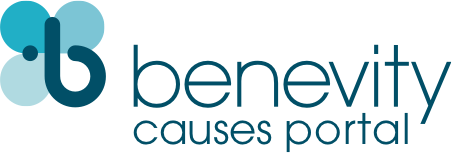YOGA BEHIND BARS
This organization has already been registered
Someone in your organization has already registered and setup an account. would you like to join their team?Profile owner : z*e@y************s.o*g
Mission Statement
Yoga Behind Bars (YBB) shares trauma-informed yoga and meditation with marginalized people behind and beyond bars to support individual healing and a more just society for all. We envision a world that prioritizes healing and growth over punishment and believe yoga practices can help facilitate community connectedness that can disrupt cycles of trauma, violence, and harm.
About This Cause
In 2023, Yoga Behind Bars offered the most classes behind bars of any nonprofit in Washington State - over 400 yoga and meditation classes at an average of 16/weekly across 9 facilities. We also launched Beyond Bars programming, providing our students with a continuum of care that starts in incarceration and continues through reintegration. More than 2.3 million people are incarcerated in the United States. 97% of prisoners return to their communities, but unfortunately 67% will return to prison within three years of their release. There is a critical need for programs to responsibly prepare people to return to society and break this cycle of suffering. That is why Yoga Behind Bars offers effective, compassionate tools to address the physical, psychological, and spiritual needs of imprisoned youth, women and men, while working towards systemic change. Locking people up is very costly, both in fiscal and human terms. Yoga Behind Bars believes in the inherent goodness and worth of each of us; the ability to redeem, rehabilitate and reform. We support people currently living behind bars, and advocate for a transformed, restorative criminal legal system. Our students experience calm, well-being, and learn proven tools to cope with stress and anxiety. Scientific research is confirming what we see every day in our classes: yoga and meditation regulate the nervous system and restore the connection between mind, heart and body. Our instructors continue to relay the positive shifts they see in their classes; from the student who reports he “pauses instead of bringing on the violence”, or the mother who now has a relationship with her children because she has been able to “forgive and make amends”, or the student who is able to be moved from solitary confinement to general population. Indeed, these transformations can be profound and life-changing. The Problem Today, the US represents 4% of the world’s population yet has 25% of the world’s prisoners. One in every 28 American children has a parent in prison or jail. Since 1970 our prison population has grown 500% and the effects of this surge have been concentrated among the poor, immigrants, and people of color. Incarceration has increasingly become an inefficient panacea for other social issues such as mental illness, racism, poverty, homelessness, and drug addiction. Just last year over 18,000 people in our state lived behind bars. Women, many of whom are mothers, are the fastest growing prison population in the nation growing by 700% between 1977 and 2004. The majority of women in prison are locked up for non-violent offenses. Many struggle with mental health issues, drug addiction, or both. In Washington State, more than 1,200 women live behind bars and both women’s prisons are filled to capacity. Researchers argue that the negative effect on children of incarcerated parents is so great that mass imprisonment increases future racial and class inequality. Our solution With so many people behind bars returning to prison within three years of their release, we urgently need to find better ways toward successful rehabilitation and lowered re-incarceration rates. Yoga Behind Bars offers effective programs, at no cost to taxpayers, that benefit physical and mental health as well as improve the overall well-being of our students. For example, yoga and meditation have been scientifically proven to: 1. Drastically reduce rates of recidivism. People who practice yoga and meditation behind bars are less likely to return to prison once they have finished their sentence; 2. Be an effective adjunctive therapy during treatment for drug addiction—three quarters of those returning from prison have a history of substance use disorders; 3. Reduce depression, anger, and anxiety—improving interactions with corrections staff and among prisoners; 4. Increase self-esteem. This is no small thing for youth, women and men who have often received the message that they are worthless and no one cares about them. Funding and staff for rehabilitative prison programming has been cut for many years; the demand for our programs continues to increase and far outpace Yoga Behind Bars’ present capacity. In addition to ever-growing expansion requests at new facilities in Western Washington, we have long-standing requests for more classes at the facilities we currently serve. Our goal is to meet this demand for growth in a sustainable way.
